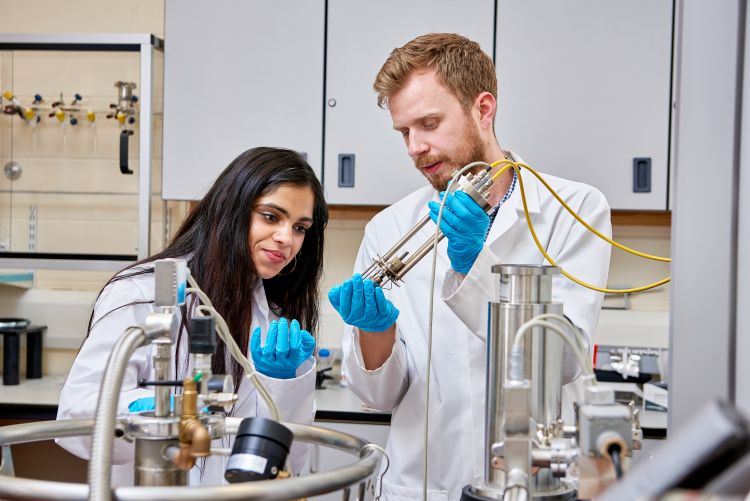Natural Sciences 2023/24
Physics

A background in physics will provide you with a strong foundation for interdisciplinary research, as the same principles which control the behaviour of all matter are equally important to the behaviour of proteins in the cell; to the properties of materials; and to the development of new spectroscopic techniques.
Combinations available:
- physics, biology, mathematics;
- physics, biochemistry, mathematics;
- physics, chemistry, mathematics;
- physics, environmental science, mathematics;
- physics, food science and nutrition, mathematics.
Watching this video in China? View this video on Youku.
Examples in science
Physics, mathematics, biochemistry or biology
Biophysics
Application of methods from physics in the life sciences has revolutionised our understanding of how biological systems work. Thanks to these high level physics concepts we can look at processes such as the folding up of proteins one molecule at a time or understand the tiny changes in energy that occur when molecules interact. At the same time theoretical modelling methods let us simulate complex biological systems to understand them in ever greater detail.
Physics, chemistry, mathematics
Materials science and nanotechnology
New materials with reactive and dynamic properties influence everything, from new electronics to self-repairing polymers and new materials for biomedical applications. To control the global properties of materials correctly, you need to understand how they work at the smallest scale. By combining your knowledge of physics, chemistry and maths, you will gain new insights into the nanoscale world.
Physics, food science, mathematics
Soft matter and food formulation
Complex, multiphase fluids and soft solids are highly structured forms of matter that exhibit unusual and interesting self-organising behaviours; examples include foams, emulsions, gels and liquid crystals. They have wide ranging applications including drug formulation, medical devices, soft electronics and food formulation. Understanding and predicting the properties of soft matter requires the application of fundamental concepts in applied mathematics and physics such as fluid dynamics and statistical mechanics. This, for example, can be used to optimise formulation and processing of foods to enhance their texture and mouthfeel, providing consumers with a more enjoyable gastronomic experience.

